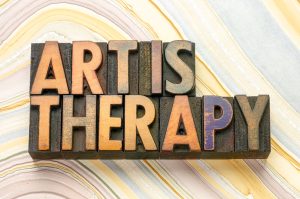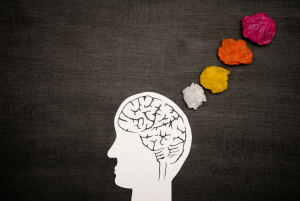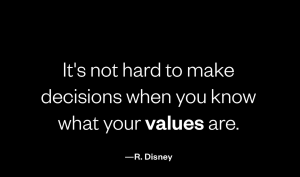Starting therapy can be overwhelming. There can be so many different therapy styles it may seem difficult deciding which one and which Psychologists to see! PLUS all the acronyms (CBT, ACT, EMDR, EFT etc!)
So here is a guide to a number of common therapy styles used by our Psychologists at ProMind Psychology (and around the world!). But before you read on, please know that you don’t have to know which therapy style you need. Our Psychologists are all trained in more than one so will be able to tailor it to you.
Cognitive Behavioural Therapy (CBT)
Cognitive-behavioural therapy (CBT) is a form of psychotherapy that is based on the idea that our thoughts, feelings, and behaviors are interconnected and can impact our mental health. CBT is designed to help people change negative thought patterns and behaviors that are causing distress, and to learn new, more positive and adaptive ways of thinking and behaving.
CBT focuses on the here and now, rather than on past experiences or unconscious processes. It involves identifying negative thoughts and beliefs (cognitions) that are contributing to psychological distress, and then working to challenge and modify those thoughts and beliefs. This can involve a range of techniques, such as journaling, thought records, and behavioural experiments, to test the validity of negative thoughts.
In CBT, the therapist works with the individual to identify and change negative thought patterns and behaviors that are contributing to their distress. This may involve teaching them new coping strategies, as well as addressing negative self-talk and thought patterns. CBT can be short-term, usually lasting between 6-20 sessions, and is goal-oriented, focusing on specific problems or issues that the individual wants to address.
CBT has been found to be effective in treating a range of mental health conditions, including depression, anxiety, post-traumatic stress disorder (PTSD), obsessive-compulsive disorder (OCD), and eating disorders, among others. It is also often used in combination with other forms of therapy, such as medication, to achieve optimal results.
CBT is a highly effective and well-researched form of psychotherapy that provides individuals with the tools and strategies to address negative thought patterns and behaviors, and to improve their mental health and well-being. By learning to identify and challenge negative thoughts, CBT can help individuals achieve greater self-awareness, insight, and fulfillment in their lives.
Acceptance and Commitment Therapy (ACT)
Acceptance and Commitment Therapy (ACT) is a form of therapy that is based on the idea that psychological suffering often arises from a struggle against our thoughts, feelings, and experiences. Rather than trying to control or eliminate these thoughts, feelings, and experiences, ACT encourages individuals to adopt a more accepting and flexible approach, and to connect with values to help guide action and decisions.
ACT is designed to help individuals develop greater psychological flexibility, which refers to the ability to be present in the moment and to engage in meaningful actions, even in the face of difficult thoughts, feelings, and experiences. The therapy emphasizes the importance of values-based living, and helps individuals identify and pursue the things that are truly important to them.
In ACT, the therapist works with the individual to identify and challenge limiting beliefs and thought patterns that are contributing to their distress. This may involve teaching them new coping strategies and mindfulness techniques, as well as encouraging them to engage in activities that align with their values and goals.
ACT has been found to be effective in treating a range of mental health conditions, including anxiety, depression, chronic pain, and substance abuse, among others. It is also sometimes used in combination with other forms of therapy, such as medication or cognitive-behavioural therapy, to achieve optimal results.
By encouraging individuals to adopt a more accepting and flexible approach to their thoughts, feelings, and experiences, ACT can help people have achieve greater clarity, purpose, and fulfilment in their lives.
Emotion Focussed Therapy (EFT)
Emotion-Focused Therapy (EFT) is a form of psychotherapy that focuses on the regulation and expression of emotions. It is based on the idea that emotions play a central role in shaping our experiences and behaviour, and that emotional distress is often the result of difficulties in managing and processing emotions.
EFT views emotions as important sources of information and motivation, and encourages individuals to explore and understand their emotions in a safe and supportive environment. The therapist works with the individual to identify and understand their emotions, and to develop new and more adaptive ways of managing and expressing them.
One of the key goals of EFT is to help individuals develop greater emotional intelligence, or the ability to recognize and understand their own emotions and the emotions of others. This is achieved through the exploration of past experiences and emotions, as well as through the use of techniques such as mindfulness and visualization.
EFT has been found to be effective in treating a range of mental health conditions, including depression, anxiety, and relationship problems. It is also sometimes used in combination with other forms of therapy, such as cognitive-behavioural therapy or medication, to achieve optimal results.
By helping individuals understand and manage their emotions, EFT can improve their mental health and well-being, and enhance the quality of their relationships and interactions with others.
Psychoanalytic Psychotherapy
Psychoanalytic Psychotherapy is a form of psychotherapy that is based on the theories and techniques developed by Sigmund Freud and his followers. It is a deep and intensive form of therapy that seeks to explore and understand the unconscious aspects of an individual’s thoughts, feelings, and behaviours.
Psychoanalytic psychotherapy is often used to treat a range of mental health conditions, including depression, anxiety, relationship problems, and trauma. It is especially helpful for individuals who are seeking a deeper understanding of their unconscious thoughts and motivations, and who are looking to make lasting changes in their lives.
In psychoanalytic psychotherapy, the therapist works with the individual to explore their unconscious thoughts, feelings, and motivations. This may involve looking at early childhood experiences and family dynamics, as well as exploring current relationships and behaviours. The therapist may also use techniques such as free association, transference, and interpretation to help the individual gain insight into their unconscious thoughts and motivations.
One of the key goals of psychoanalytic psychotherapy is to help individuals gain a greater understanding of their unconscious thoughts and motivations, and to develop new and more adaptive ways of coping with their emotions and experiences. This can lead to improved mental health and well-being, as well as enhanced relationships and more fulfilling life experiences.
Psychoanalytic psychotherapy is often a long-term form of therapy, with sessions typically taking place once a week for more than a year. It is also a relatively intensive form of therapy, and requires a significant investment of time, energy, and commitment from both the individual and the therapist.
Psychoanalytic psychotherapy is a powerful form of psychotherapy that can provide individuals with a deep and lasting understanding of their unconscious thoughts and motivations. By exploring the unconscious aspects of their thoughts, feelings, and behaviours, individuals can achieve greater self-awareness, improve their mental health and well-being, and achieve greater fulfillment in their lives.
Exposure Therapy
 Exposure therapy is a type of cognitive-behavioural therapy (CBT) that is used to treat anxiety disorders, such as phobias, panic disorder, and post-traumatic stress disorder (PTSD). The main goal of exposure therapy is to help individuals face and overcome their fears by gradually and repeatedly exposing them to the object or situation that triggers their anxiety.
Exposure therapy is a type of cognitive-behavioural therapy (CBT) that is used to treat anxiety disorders, such as phobias, panic disorder, and post-traumatic stress disorder (PTSD). The main goal of exposure therapy is to help individuals face and overcome their fears by gradually and repeatedly exposing them to the object or situation that triggers their anxiety.
Exposure therapy works on the principle that avoidance of feared objects or situations reinforces and maintains anxiety, while repeated and controlled exposure to the same object or situation can help reduce anxiety over time. During exposure therapy, the individual is gradually and systematically exposed to the object or situation that triggers their anxiety, usually in a controlled and safe environment.
For example, if an individual has a fear of flying, the therapist may start by exposing the individual to pictures or videos of airplanes and gradually progress to having the individual visit an airport, watch takeoffs and landings, and eventually take a short flight. The therapist provides support, guidance, and reassurance during each exposure, and the individual is encouraged to confront their fears head-on.
Exposure therapy is often used in combination with other forms of therapy, such as cognitive therapy and relaxation techniques, to achieve optimal results. It is also often used as a standalone form of therapy, especially for individuals who are seeking a more direct and action-oriented approach to overcoming their fears.
Exposure therapy is a highly effective form of therapy that has been shown to help individuals reduce their anxiety and overcome their fears. By gradually and repeatedly exposing themselves to the objects or situations that trigger their anxiety, individuals can develop greater confidence, resilience, and well-being, and achieve greater peace of mind and satisfaction in their lives.
Solution Focussed Therapy
Solution Focused Therapy (SFT) is a type of psychotherapy that focuses on finding solutions to problems, rather than dwelling on the problems themselves. It is a short-term, goal-oriented form of therapy that is designed to help individuals achieve positive and lasting change in their lives.
In SFT, the therapist works with the individual to identify and build on their strengths and resources, rather than focusing on their weaknesses and limitations. The therapist helps the individual to clarify their goals, and to develop a roadmap for achieving these goals in a positive and solution-focused way.
The key principles of SFT include focusing on the future, rather than the past, and focusing on solutions, rather than problems. The therapist encourages the individual to imagine a future in which their problems have been resolved, and then works with the individual to identify the steps that need to be taken to make this future a reality.
One of the key advantages of SFT is that it is a fast-acting and highly effective form of therapy that can help individuals achieve positive change in a relatively short period of time. It is also a highly flexible form of therapy that can be adapted to meet the unique needs and goals of each individual.
SFT is often used to treat a wide range of mental health conditions, including depression, anxiety, relationship problems, and trauma. It is also often used as a complementary form of therapy, in conjunction with other forms of therapy, such as cognitive-behavioural therapy (CBT) or psychodynamic therapy, to achieve optimal results.
SFT is an empowering form of therapy that can help individuals achieve positive and lasting change in their lives. By focusing on solutions, rather than problems, and by building on their strengths and resources, individuals can develop greater resilience, well-being, and satisfaction in their lives.
Dialectical Behavioural Therapy (DBT)
Dialectical Behaviour Therapy (DBT) is a type of cognitive-behavioural therapy (CBT) that was originally developed to treat individuals with borderline personality disorder (BPD). It is a highly effective and evidence-based form of therapy that is used to treat a wide range of mental health conditions, including depression, anxiety, and trauma.
DBT is based on the idea that individuals who struggle with intense and often conflicting emotions may benefit from learning new coping skills and strategies for managing their emotions. The therapy is designed to help individuals regulate their emotions, reduce self-destructive behaviours, and improve their relationships with others.
DBT is structured in four modules: mindfulness, distress tolerance, emotion regulation, and interpersonal effectiveness. The therapy emphasizes mindfulness, or the practice of being present and fully engaged in the moment, as a way to reduce stress and improve overall well-being. Distress tolerance skills are taught to help individuals manage intense emotions and avoid impulsive and self-destructive behaviours. Emotion regulation skills help individuals understand and regulate their emotions, while interpersonal effectiveness skills are designed to help individuals communicate more effectively and improve their relationships with others.
One of the key features of DBT is that it is a skills-based form of therapy, which means that individuals learn specific skills and strategies that they can use to manage their emotions and improve their well-being. The therapy is delivered in individual and group sessions, and individuals are encouraged to practice the skills they learn in their daily lives, as well as during therapy sessions.
DBT is a highly effective form of therapy that has been shown to help individuals reduce their symptoms of depression, anxiety, and other mental health conditions, as well as improve their overall well-being and quality of life. It is a flexible and adaptable form of therapy that can be tailored to meet the unique needs and goals of each individual, and it is often used as a complement to other forms of therapy, such as medication or individual therapy.
DBT helps individuals regulate their emotions, reduce self-destructive behaviours, and improve their relationships with others. By learning new coping skills and strategies for managing their emotions, individuals can achieve greater well-being, peace of mind, and satisfaction in their lives.
Eye Movement Desensitisation Reprocessing (EMDR)
 Eye Movement Desensitization and Reprocessing (EMDR) is a form of psychotherapy that was developed to help individuals overcome the symptoms of post-traumatic stress disorder (PTSD) and other types of trauma-related stress. It is based on the idea that traumatic memories and experiences can become “stuck” in the brain, leading to ongoing emotional and psychological distress.
Eye Movement Desensitization and Reprocessing (EMDR) is a form of psychotherapy that was developed to help individuals overcome the symptoms of post-traumatic stress disorder (PTSD) and other types of trauma-related stress. It is based on the idea that traumatic memories and experiences can become “stuck” in the brain, leading to ongoing emotional and psychological distress.
EMDR involves using eye movements, tapping, or other forms of bilateral stimulation to help the brain process and integrate traumatic memories. The therapist leads the individual through a process of recalling the traumatic event while simultaneously engaging in the bilateral stimulation. The idea is that the stimulation helps to “unlock” the traumatic memories, allowing the brain to process and integrate them in a way that leads to reduced symptoms and distress.
EMDR has been found to be an effective form of treatment for PTSD and other types of trauma, as well as for other mental health conditions, such as anxiety, depression, and phobias. It is also sometimes used to help individuals overcome performance anxiety and to improve self-esteem and self-confidence.
EMDR is an incredibly powerful and effective form of therapy that can help individuals overcome the symptoms of trauma and other mental health conditions. By allowing the brain to process and integrate traumatic memories in a safe and controlled manner, EMDR can help individuals achieve greater emotional and psychological well-being.
Schema Therapy
Schema Therapy is a form of psychotherapy that combines elements from cognitive-behavioural therapy (CBT), gestalt therapy, and psychoanalytic approaches. It is designed to help people overcome longstanding, negative patterns of behaviour and thought (referred to as “schemas”) that are rooted in early life experiences and have contributed to emotional and psychological difficulties.
Schema therapy aims to help individuals understand and change their core beliefs, or schemas, about themselves, others, and the world. These schemas often develop in childhood as a result of traumatic or negative experiences and can lead to persistent negative patterns of behaviour, thoughts, and emotions. For example, someone with an “abandonment schema” may have a persistent fear of abandonment and may avoid close relationships as a result.
The therapeutic process in schema therapy involves a range of techniques, including cognitive restructuring, visualization, and role-play. The therapist works with the individual to help them understand the origins of their schemas, as well as how these schemas are affecting their current behaviour and thoughts. The therapist also helps the individual to develop new, more positive beliefs and coping strategies to replace their negative schemas.
Schema therapy has been found to be effective in treating a range of mental health issues, including personality disorders, depression, anxiety, and relationship difficulties. It is also often used in combination with other therapeutic approaches, such as cognitive-behavioural therapy or psychodynamic therapy.
By helping individuals to identify and change their underlying negative schemas, Schema therapy can help them to achieve a greater sense of well-being, self-awareness, and fulfilment in their lives.
Art Therapy
 Art therapy is a form of psychotherapy that uses art materials and the creative process to explore and express emotions, thoughts, and experiences. It is based on the idea that the creative process can be a powerful tool for self-expression and healing, and that creating art can help individuals gain insight into their emotions and behaviour.
Art therapy is a form of psychotherapy that uses art materials and the creative process to explore and express emotions, thoughts, and experiences. It is based on the idea that the creative process can be a powerful tool for self-expression and healing, and that creating art can help individuals gain insight into their emotions and behaviour.
Art therapy is often used to treat a range of mental health conditions, including depression, anxiety, trauma, and relationship problems. It can be especially helpful for individuals who find it difficult to express themselves verbally, or who struggle with traditional forms of therapy.
In art therapy, individuals are encouraged to use a variety of art materials, such as paints, crayons, or clay, to create images or sculptures that express their feelings and experiences. The therapist may also use techniques such as guided imagery, visualization, and mindfulness to enhance the therapeutic experience.
One of the key goals of art therapy is to help individuals develop greater self-awareness and insight into their emotions and behaviour. This is achieved through the exploration and interpretation of the artwork created, as well as through the use of therapeutic techniques such as verbal expression and reflection.
Art therapy is often used in combination with other forms of therapy, such as cognitive-behavioural therapy or medication, to achieve optimal results. It is also sometimes used as a standalone form of therapy, especially for individuals who are seeking a more creative and expressive form of self-expression and healing.
Art therapy is a well-respected form of psychotherapy that provides individuals with a unique and powerful tool for self-expression and healing. By using the creative process to explore and understand their emotions, thoughts, and experiences, individuals can improve their mental health and well-being, and achieve greater self-awareness and insight.









